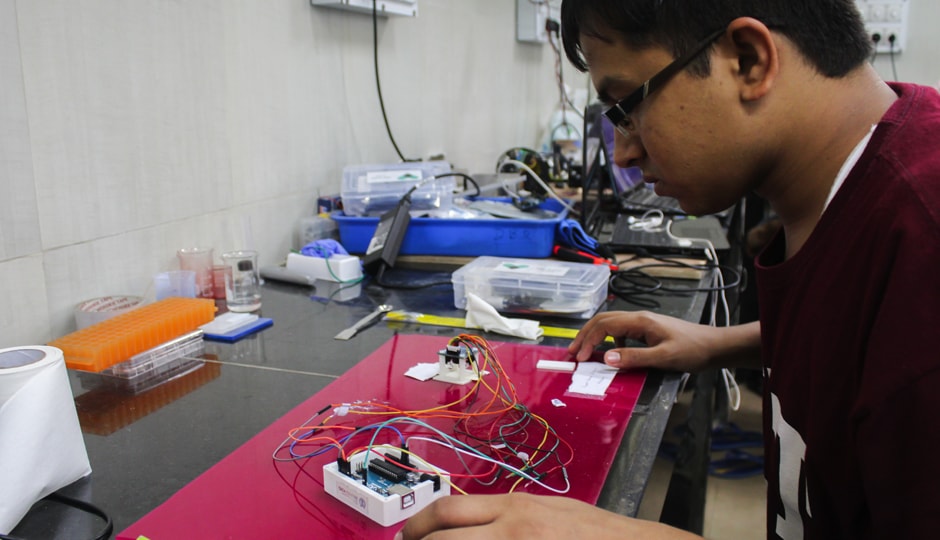 Osteoporosis is a skeletal disorder which commonly affects the elderly people. Osteoporotic fractures are associated with high morbidity and mortality. There is a net loss of bone associated with osteoporosis and, therefore, the relative rates of bone formation and resorption need to be monitored using bone turnover markers (BTMs), towards predicting fracture risk or monitoring the efficacy of treatment. Bone mineral density (BMD) measurement by dual-energy X-ray absorptiometry (DXA) is considered as one of the standards for diagnosis of osteoporosis. However, it does not reflect the rates of bone turnover; further, significant BMD changes are detectable only after about a year. The levels of BTMs, on the other hand, change significantly within three months of starting therapy. Currently, available kits for BTM estimation involve manual or automated assaying of single markers. They require substantial sample volumes, are time consuming, and are expensive. Work carried out at NIRRH, by the co-investigators of this proposal, indicates that a battery of BTMs along with hormones need to be estimated for accurate and early detection and management of osteoporosis. Standardisation of a multianalyte ELISA array for the BTM is currently underway at NIRRH.
Osteoporosis is a skeletal disorder which commonly affects the elderly people. Osteoporotic fractures are associated with high morbidity and mortality. There is a net loss of bone associated with osteoporosis and, therefore, the relative rates of bone formation and resorption need to be monitored using bone turnover markers (BTMs), towards predicting fracture risk or monitoring the efficacy of treatment. Bone mineral density (BMD) measurement by dual-energy X-ray absorptiometry (DXA) is considered as one of the standards for diagnosis of osteoporosis. However, it does not reflect the rates of bone turnover; further, significant BMD changes are detectable only after about a year. The levels of BTMs, on the other hand, change significantly within three months of starting therapy. Currently, available kits for BTM estimation involve manual or automated assaying of single markers. They require substantial sample volumes, are time consuming, and are expensive. Work carried out at NIRRH, by the co-investigators of this proposal, indicates that a battery of BTMs along with hormones need to be estimated for accurate and early detection and management of osteoporosis. Standardisation of a multianalyte ELISA array for the BTM is currently underway at NIRRH.
This project aims to develop an inexpensive point-of-care (POC) multiplexed immunodiagnostic device for BTM for diagnosis of osteoporosis. We intend to fabricate paper and PDMS-based microfluidic `lab-on-a-chip’ POC devices which facilitate simultaneous detection of multiple BTMs in a blood sample. A smartphone-based spectrophotometric reader will also be built to permit convenient on-site quantification of test results.



